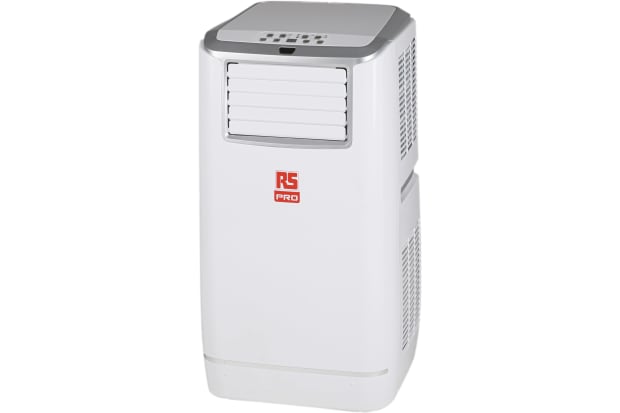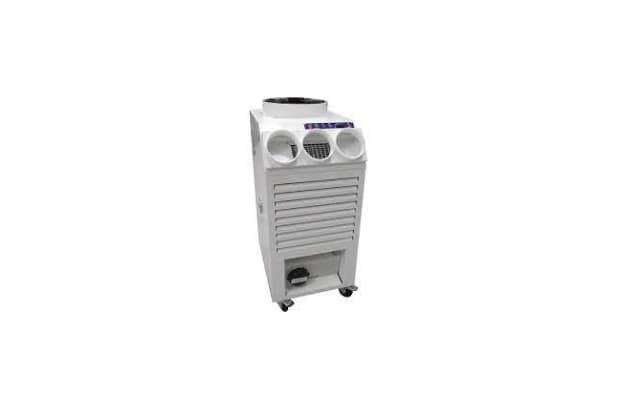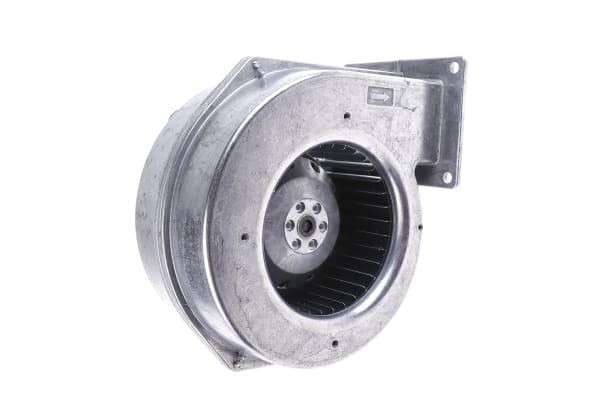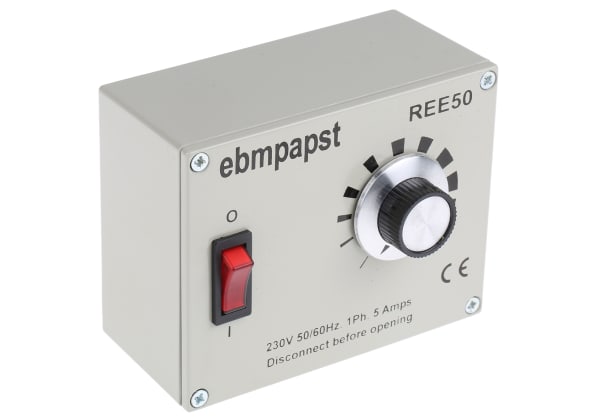- Published 10 Jan 2023
- Last Modified 27 Nov 2023
- 13 min
Guide to Air Conditioning Units
Enhance your understanding of air conditioners with this guide, exploring the basics, functions, and types of cooling systems.

Reviewed by Stephen Bettles, Technical Support Engineer (April 2021)
In this comprehensive guide to air conditioners, we will delve into the air conditioning basics. We will explore essential definitions, functions, and the various types of air conditioners found on the UK market. Whether you are a homeowner or an office manager, this guide aims to identify the common roles these cooling systems play in a wide range of residential and commercial spaces. Get ready to enhance your understanding of air conditioners and make informed decisions about your cooling needs.
What are Air Conditioners?
Air conditioners are machines that take in and alter or treat the air around them - usually operating within an enclosed indoor zone or environment - before recirculating or expelling it outside of the area for the benefit of users in that area.
Any such machine installed as part of a broader HVAC (heating, ventilation and air-conditioning) system might technically qualify as an air conditioning unit. In everyday usage, however, the terms air conditioner, air-con or A/C almost always signify a unit designed to rapidly chill excessively warm air, helping to create a more comfortable living or working environment for people in the immediate vicinity.
How Does Air Conditioning Work?
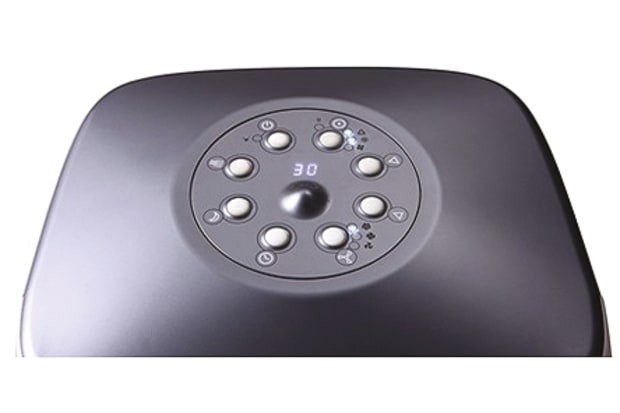
While we’re all familiar with what an air conditioning unit does, fewer could confidently describe how air conditioning works. For the purposes of this guide, we’ll refer broadly to machines designed for cooling.
How Does an Air Conditioner Work: Step-by-Step
The air conditioning process may initially seem complex, but here's a simplified breakdown of the key steps a modern air conditioning system undergoes to keep you cool:
- A thermostat sets the temperature you want in a given space. Ambient sensors communicate with the A/C unit, automatically starting or stopping the mechanical cooling process
- When requested, the air conditioner sucks in warm air from the room through a blower motor - essentially a series of powerful fans - and channels it over a network of hollow, sealed metal coils
- These closed coils contain refrigerant compounds - chemicals that can easily be forced to change states from liquid to gas. This phase conversion process is endothermic, meaning it naturally absorbs heat, and so the metal coils quickly lose warmth to it
- As air passes over the coils, it too drops in temperature as this ongoing phase conversion pulls in heat. Moisture in the air is also deposited on the coils as condensation at this stage and drained off
- As there’s a finite amount of refrigerant contained in the coils, the liquid-to-gas state change will eventually need to be reversed so that the cycle can keep running. To achieve this, a compressor in the A/C system kicks in, forcing the vaporised refrigerant back into liquid form
- As you’d expect, reversing the phase conversion process also reverses the outcome. It becomes an exothermic process, meaning it expels heat - the opposite of the desired effect. For this reason, the compressor is usually located on an exterior roof or wall. Warm air generated at this stage is directed away from the immediate area
- These processes are, in effect, looped continuously while the A/C unit works, with the resulting cold/warm air streams being directed into/outside the building. Indoor cooling can, therefore, continue for as long as necessary to reach the thermostat temperature
When was Air Conditioning Invented?
Although the sleek, powerful, user-friendly air conditioners we’re all familiar with continue to evolve even now, the origins of modern climate control units and techniques actually lie much further back than most people might realise.
In fact, two early but very significant steps were taken in the development of A/C technology as early as the mid-1800s. British chemist, physicist and inventor Michael Faraday - best known as the inventor of the Faraday Cage, a technology for blocking and dissipating electric fields that we still employ widely today - was among the first to discover that air could be chilled with compressed and liquidised ammonia. Following on from this breakthrough, Philippines physician Dr John Gorrie developed Faraday’s idea of using compression forces to reduce temperature. He then took one step further and actually came up with a workable compression-based system for creating ice, which he used to cool rooms in a Florida hospital.
After this, the earliest versions of the modern air con unit we’d recognise today were prototyped by US inventor Willis Carrier in 1902. Tasked with solving an ambient humidity issue for a Brooklyn printworks, he took the concept of mechanical refrigeration and developed a machine that worked along similar lines, but with a strictly HVAC/thermal management focus, as the problem demanded.
Carrier’s inspired solution was a device that funnelled the warm, moist air of the printworks through a series of copper coils filled with cold water. As it wafted over these coils, the air cooled quickly enough to deposit much of its moisture on the exposed metal pipework as condensation. It exited at far lower temperatures than it had entered.
It would still be another four or five years before the generic name air conditioner was coined. Of course, those early bespoke creations were hardly practical; bulky, loud, and prohibitively expensive. However, Carrier felt the idea had broader potential, and stuck with it. He eventually founded the pioneering Carrier Air Conditioning Company of America.
In 1933, the first belt-driven, mechanically controlled evaporator coil AC units rolled off the production line in America. Nearly a century later - innumerable tweaks and improvements to the basic formula notwithstanding - many of Carrier’s basic innovations are still central to the quiet, compact, sensor-driven, and energy-efficient units we rely on today.
Types of Air Conditioning Units
Given the variety of environments air con units are deployed in, and the diverse range of temperatures and humidity they’re expected to maintain in various locations, it’s no surprise that there’s a wide selection of AC units and system configurations designed and sold by suppliers worldwide.
Many of them also pack in some fairly major additional features and functions alongside their basic cooling properties. In this section, we’ll outline a few key types to look out for.
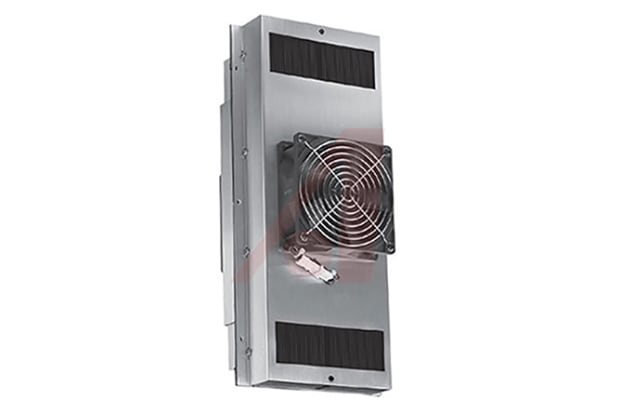
Split Wall-Mounted Units
Split AC units are a popular method of physically separating the two main stages of an air conditioner’s work. They’re installed in two parts - an indoor and an outdoor unit. The former contains the blower and cooling coil, while the latter houses the condenser coils, compressor, capillary tubing, etc.
A split-unit AC is therefore much easier to install in most settings, as there’s no complex or invasive ductwork system to be run through the interior of a building to divert out the warm air - that part of the transfer is already happening outside. Additionally, this division of labour means that a split-unit air conditioner runs quieter for those inside the premises.
It also allows hooking up multiple intake units to a single outside processing unit, which leads to greatly increased efficiency over time. In general, the downside of a split unit is that it has a higher initial cost, although lower energy bills usually make this more than recouped.
Single Portable Units
Single portable AC units offer all kinds of flexibility bonuses as they can freely be moved from room to room as and when needed. However, the main caveat here is that you’ll need a way of venting them directly to the outside in all locations you wish to use them.
It should be noted that most portable air conditioners still aren't easy to move. They can be extremely heavy, even if they’re wheeled, and they’ll also need to be manually emptied of water regularly as they’ll automatically shut down when full. They’re very handy for short-term fixes but are generally only suitable for cooling one room at a time. If you need air conditioning over a wider area, then other options will likely prove more efficient.
Units with Dehumidifiers
Combination air conditioner-dehumidifier units are also common. The two types of machines perform almost identical functions in terms of removing moisture from the air, and they do it using the same methods as each other. What differs is how waste products are dealt with.
While air conditioners channel warm air outside the room or building they’re trying to cool, dehumidifiers usually churn it back out in the immediate vicinity. Similarly, the moisture removed by air con units (as a natural consequence of the heat transfer process) is often automatically drained away to the outside too. Dehumidifiers, meanwhile, rely on their owners manually emptying an integrated bucket system periodically.
Units that combine both functions can, therefore, err one way or the other. In most cases, the more cost-effective combo AC units with dehumidifiers will require more manual input to operate. Pricier models will often be able to direct moisture outside automatically, provided you can create the necessary ducting routes to allow for that.
Units with Heaters
Combined air conditioning and heating units might sound contradictory at first. The mechanics of how an AC unit works always generate heat somewhere as a natural part of the process. In a cooling-only scenario, heat will need to be channelled away from the area efficiently.
In more changeable climates, though, users will often have very different temperature requirements at different times of the year. That’s where a portable air conditioner-heater might come in handy. The only real difference with these sorts of units is that the heat pump can be reversed. At the flick of a switch, users can instruct these versatile machines to direct warm air created at one end of the phase conversion process back into the room instead of always to the outside.
Uses for Air Conditioning Units
While the core mechanics of all AC units are always fairly uniform and predictable, the air con uses themselves are almost as diverse as the many makes and models of conditioner available to buy. For example:
Domestic Use
In many countries around the world, domestic air conditioning units represent the biggest sector of the overall AC market. This may not be the case in the UK, although demand for domestic air conditioners is increasing. However, during the summer, portable air-con units for short-term domestic use are always popular.
Garages
Air conditioners for garages are useful for freshening up the general fug of auto fumes, gardening products, cleaning chemicals, and DIY essentials that can linger in these small, multi-use spaces. Various sorts of combo units (such as AC with dehumidifiers or heaters) can really help stabilise the overall ambience and humidity in what is often a highly changeable environment. Small, portable, ductless air con units for occasional or seasonal use are becoming increasingly popular in garages.
Conservatories
Conservatory air conditioning units can be a real bonus throughout the year. These ever-changing environments, often built in relatively exposed locations around building exteriors, can swelter in summer but feel far too chilly at many other times of the year. Air con units for conservatories can really help stabilise and control this sort of environment.
Commercial Use
Commercial air conditioning can take on a diversity of forms and functions. In many cases, just as with domestic versions, it will primarily be about keeping employees comfortable, productive, and happy. However, there are also some slightly more specialised roles played by popular AC setups in a variety of industries and sectors.
Offices
Depending on what the pervading air quality and the ambient temperature are like in any given business or workplace, office air conditioners could be an absolute must for a contented and motivated workforce. Industrial building-wide AC systems are commonplace in many types of office environments, but portable office air conditioners might well be an equally viable option if you’re renting a workspace, or in any other circumstance where it’d be overly impractical to install a large-scale plumbed and hardwired system.
Retail
Cavernous spaces, polished surfaces, and a lack of direct access to pure air from outside can mean that many intensive retail environments quickly feel too hot, stuffy, chilly or stale. Retail air conditioning can help lift the general atmosphere inside a busy, high-footfall showroom or shop floor space. This can quickly translate into tangible benefits for staff, customers, and turnover alike.
Server Rooms
Air conditioning units for server rooms can play a crucial role in keeping vital hardware ticking over at optimal temperatures and humidity levels. Precise climate control for server racks and storage facilities is a delicate science and is taken very seriously across the IT industry. Server room A/C is therefore regarded as a separate, specialised branch of the HVAC market.
For further guidance on this or any other aspect of planning and costing an air conditioning purchase, please contact a member of our expert support team.
Use one of the links below to view our air conditioning units:
FAQs
Summary
This guide offers a concise guide to air conditioners, covering definitions, functions, and types of units found in the UK. It helps you understand the role of these systems and enables you to make informed cooling decisions based on your needs.
Related Guides
Related links
- SIP 05649 Portable Air Conditioning Unit
- SIP 05647 10000Btu/h Portable Air Conditioning Unit Type G - British 3-pin
- RS PRO 13000Btu/h Portable Air Conditioning Unit Type F - Schuko...
- RS PRO 15000 BTU/h Portable Air Conditioning Unit Type F - Schuko...
- RS PRO 18000 BTU/h Portable Air Conditioning Unit Type F - Schuko...
- RS PRO 11500Btu/h Portable Air Conditioning Unit Type F - Schuko...
- Rittal Blue e+ Series Air Conditioning Unit 380 → 480V ac 1600 x...
- Phoenix Contact Air Conditioning Unit 24V dc
